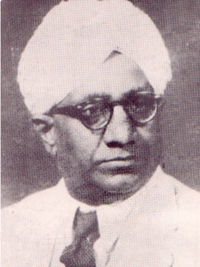The course of right conduct prescribed for laymen is conveniently divided into eleven steps (pratima) which are included in the fifth stage of spiritual evolution (guna-sthana) A layman after shedding all superstition, adopts right attitude and starts observing the vows noted above; he practices self-contemplation, thrice a day, with a view to attaining mental equipoise; he observes weekly fasts, spots taking green vegetables, etc., and meals after sunset; after sunset; he observes strict celibacy, claims no property as his own, does not take interest in worldly matters and stops taking food specially cooked for him. According to his ability and environment he can proceed stage by stage; but once he reaches the eleventh stage, he is fully prepared for practicing the server course of ascetic life.
According to Jainism, dying is as much an art as living. A layman is expected to live not only a disciplined life but also die bravely a detached death. There are elaborated rules about voluntary death (sallekhana), which has been practiced not only by Jain monk But also by pious laymen; and we have innumerable inscriptions commemorating the detached deaths of pious Jains. This voluntary death is to be distinguished from suicide which Jainism looks upon as a cowardly sin. When faced by calamity, famine, old age and disease against which there is no remedy, a pious Jain peacefully relinquishes his body, being inspired by a higher religious ideal. With a pure mind, he rises above love and hatred, and relinquishes attachment and possessions; he forgives all and asks his kinsmen and attendants to forgive on the eve of his life. After recounting and confession his sins and voiding all sorts of distractions, he sets his mind on the high pitch of peace. First, he should stop taking solid food and take only liquid food for some time; then gradually he should pass on to pure water; and finally, he should observe complete fasting and give up his body with the mind occupied by religious meditation. He neither yearns to live now to die; he is not afraid of anything; and he neither brooks over his past pleasures nor has any prospective remunerative hankering. It is with such a quite and detached mood that he faces death bravely and voluntarily.
What apparently distinguishes a Jain monk from a layman in his itinerant living with no abode as his own and his having no possessions or paraphernalia beyond those required for his religious observances. In their outward form and equipment we see some different schools among the Jain monks. The Digambara monk, who goes about naked, has a kamandalu (a gourd pot) to carry water for the call of nature and a bunch of peacock feathers for cleansing the seat etc. But if he belongs to the lower stage, he has minimum clothing to cover his nudity. A Svetambara monk is clad in white robes; and he is quipped with a staff, a skein of wool and wooden pots. They differ here and there in the rules of outward behaviour which affect their mode of touring, eating, etc. the inner religious life; however, is fundamentally the same for the various schools.
The five Anuvratas of a layman, namely, not to kill, not to lie, not to steal, to abstain from sex and to renounce property, are called Mahavratas in the case of a monk who has to observe them with maximum rigour thoroughness. These are sins leading to the influx of karmas; the monk must abstain from them in thought, word and deed; and he should neither commit, commission nor consent to them. The rigidity with which he is expected to observe the rules and the elaborated details of his conduct only show how minutely the whole system of ascetic morality is worked out.
The entire spiritual career of the soul is divided into fourteen stages called Gunasthanas. The soul here marches from bondage and gross ignorance to final liberation and omniscience, gradually overpowering at different stages wrong belief, unrighteousness, negligence, passions and channels of activities. In the first four stages, the soul is struggling against wrong belief, which is overcome in the fifth stage where righteous. Conduct begins and is practiced by a layman through eleven Pratimas, noted above. In the sixth he is already a monk, but still liable to negligence and lapses. In all stages up to the eleventh a regression may take place, and the soul may fall even down to the first stage. When he reaches the twelfth, the passions etc., are destroyed and he launches upon excellent meditation. In the thirteenth stage he is still in the world, retaining some activities of body, speech and mind. When all his activities stop, he enters the last stage where all karman is destroyed; and the soul attains its fullest spiritual status.
Here we may broadly outline the disciplinary code of a monk, which he has to practice for the perfection of his Mahavratas. His one aim is to stop the influx of fresh karman and to destroy all that has already bound him. The flow of karmas into the Atman or soul is caused by the activities of body, speech and mind; so it is necessary for him to keep these channels under strict control (gupti). It is just possible that even in performing the duties of a monk the vows might be transgressed out of inadvertence. As a precautionary measure, the monk must be very cautious in walking, speaking, begging food, (samiti) It is mainly due to the passions that the soul assimilates karman; so anger, pride, deception and greed must be counteracted by cultivating ten best virtues (dasadharma) namely, forgiveness, humility, straightforwardness, contentment, truthfulness, restraint, austerities and renunciation, etc. To cultivate the necessary religious topics, namely, everything is transitory, men are helpless against death etc., the circuit of existence is full of misery, the soul has to struggle all alone, the relatives and others are quite separate, the Body is impure, the karman is constantly inflowing, the karman should be stopped by cultivating necessary virtues, the karman should be destroyed by penances, the nature of the universe, the rarity of religious knowledge, and lastly, the true nature of religion (anupreksa)
To keep himself steady on the path of liberation and to destroy the karman, a monk has to bear cheerfully all the troubles (parisaha) that might cause him distraction or pain. There are twenty-two troubles, which a monk is expected to face unflinchingly: hunger and thirst, cold and heat, trying circumstances, unpleasant feelings, illness, etc. His spiritual discipline or conduct is fivefold, and its pitch ranges from equanimity to ideal and passionless conduct (caritra).
The last but not the least routine of a monk consists in wisely practicing penances or austerities (tapas). He should not be tempted and stopped in the middle by miraculous powers etc. His one aim is to reach Nirvana or Moksa. Penance is twofold: External, referring to food and physical activities, and Internal, referring to spiritual discipline, each of which is of six kinds. The external austerities are:
- Fasting;
- eating less than one’s fill, than one has appetite for;
- taking a mental vow to accept food from a householder only if certain conditions are fulfilled without letting any one know about them;
- day-to day renunciation of six kinds of delicacies such as ghee, milk, curds, sugar, salts and oil;
- sitting and sleeping in a secluded place, devoid of animate beings; and lastly,
- mortifications of the body, so long as the mind is not disturbed.
These penances show what a rigorous life of self-denial the Jaina monks lead. He just sustains the body with minimum of his spiritual ideal. Jainism has evolved an elaborate technique of fasting, and the Jain monk trains himself all along his career so efficiently that when the hour of death comes, he accepts voluntary fasting, gives up the body as easily as one would throw off an old garment. Month by month he takes exercises in fasting by observing series of fasts differently arranged.
Internal penance refers to spiritual discipline and is also of six kinds:
- Confession and repentance of sins;
- modest behaviour;
- rendering service to other members of the order;
- study of scriptures;
- giving up all attachment for the flesh; and lastly,
- meditation.
Meditation or contemplation (dhyana) is the most important spiritual exercise whereby alone the soul progresses onto higher Gunasthanas and destroys all the karmas. Attachment for beneficial and aversion to harmful objects have to be given up to attain concentration of mind, which is the prerequisite of successful meditation. It is the pure (sukla) meditation, which ultimately leads the soul to liberation; there is a complete cessation of physical, verbal and mental activities and the Atman or the Self is absorbed in himself. With the entire stock of karmas exhausted the soul shoots up to the top of the universe where the liberated souls stay forever.
It is clear from the Jain metaphysics that there is no place in Jainism for God as a creator and distributor of prizes and punishments. By god, Jainism understands a liberated soul as well as the Trithamkaras, who is the highest spiritual ideal after which every soul can aspire; the God is an example to inspire and to guide. Thus the basis of Jain conception is quite different from that in Hinduism. Though the God is not a creator, the Jain religion nether lacks devotional fervour nor ceremonials. Jains offer prayers to Him, worship Him both in concept and in concrete, and meditate, on Him. Respectful prayers are offered to the Tirthamkara, liberated soul, preceptor, preacher and monk, because these represent various stage of the soul’s spiritual progress. Such a routine keeps one vigilant about one’s ideal and strengthens one’s heart, warning every time that one is to depend on oneself to destroy the karmas. Jainism is thus the religion of self-help and can be practiced by the self-reliant, strong and brave.
The details set forth above enables us to determine the relation between Jainism and Hinduism For certain reasons the Jains are often called Hindus nowadays; in Northern India some castes are common to Hindus and Jains, and intermarriages have been allowed between them. Being scattered practically all over India and living in the midst of the numerical majority of Hindus, the Jains of some of the localities are influenced by Hindu customs and observances, and in later years, especially their enlightenment, never clamored for special political safeguards for their community but joined whole-heartedly the nationalistic forces in the country. But as long as the term Hindu does not mean merely an Indian and carries with it a religious import, the Jains cannot be called Hindus, taking into account all that their religion and philosophy stand for and do not stand for.
The Vedic scriptures and Law Books have no religious sanctity for the Jains who have their own separate scriptures, ancient and modern. The authority of the Brahmanical priests and order of the society and the religious ceremonies upheld by them, the Puranas and their myths, gods and cults, the Vedic and Puranic ideas of creation and divine dispensation, and the philosophical speculations of the Darsanas, all these are not accepted in Jainism which naturally, is more than once criticized by authors like Sankaracarya. If Jaina rituals and mythology show contact with Puranic ideas, it is not so much due to the sanction of Jainism as to the influence of the surrounding customs and observances. Jains have their independent places of pilgrimage, and have their special festivals besides those, which they happen to share with the masses round about. It is not the common terms, but the underlying philosophical ideas and the stress laid on ethico-moral values that will have to be taken into account. As religions, Jainism and Buddhism in view of their history, metaphysics and ethics, cannot be labeled as Hinduism.
The traces of Jain influence on Indian life can be detected here and there. The worship of idols in a refined form, the building of temples for the same, founding of charitable lodges for men and animals, keeping the MSS Libraries fully enriched, and distribution of food etc. to the poor: these are some of the outstanding features of the Jain society, and to a very great extent they are imitated by others. It is Jainism and Buddhism that have been foremost in upholding the doctrine of Ahimsa, and it is Jainism that has stuck to its ideology more than Buddhism, Jain monks have led an exemplary life; and as living embodiments of kindness to living beings, they wandered all over India winning the sympathies of even non Jain peasants and princes for the doctrine of Ahimsa. The practice of it has been often misunderstood and misrepresented. The ideal Ahimsa was meant only for a houseless monk, but to the layman it is re-scribed according to his position and stage of religious progress. This has allowed Jain kings and heroes to fight on the battlefield for their kingdom and for their safety and honour. Under some of the dynasties of the South and Gujarat there have flourished many soldiers who were both heroes and pious Jains. As a community, the Jains have been strict vegetarians, and wherever they are found in large numbers they have influenced their surroundings. Throughout their literature and in the preaching’s of their teachers animal sacrifice has been condemned. In modern times the leading Jains in different centres have tried to stop the sacrifice of animals in front of local deities, and they have been successful in many places. The Jain authors have disapproved even the sacrifice of a paste model of an animal, because this involves the intention of killing an animal. The Jain literature abounds in myths, fairy tales, proverbs, popular stories, behaviour patterns and moral exhortations all of which go to denounce cruelty to living beings. All these have gone a long way to discourage animal sacrifice. Most of the Indian religions have casually preached Ahimsa but nowhere, except in Jainism, it is the basic creed so systematically worked out to pervade the entire moral code. Jains have often suffered at the hands of others, but it is admitted by historians that Jains, even when they wielded political; power, never ill-treated others.
Mahatma Gandhi has been the greatest exponent of Ahimsa in modern times. Though he has given a fresh and up to date orientation to it, the seeds of his doctrines are traced more in Jainism than in any other Indian system. Some of the facts with which Gandhiji has invested his Ahimsa are not found in Jain works because the purpose for which and the circumstances under which he preached it were different. The Jain monks are quite aware of the power of Ahimsa as a social factor, but their spiritual aim necessitated no applications of it outside the religious life. To have minimum necessities of life, to bear no ill will towards any one, to take recourse to fasting for self- purifications, to undertake tours on foot for contact with people; all these aspects of Mahatma Gandhi’s life remind us of Jain monks and their routine. As a great son of India, Mahatma Gandhi had rightly reinterpreted the doctrine of Ahimsa, non-violence, and Satya, (Truth) for the Modern World; and these two principles can be looked upon as universal moral norms to judge the behaviour of men and women, individually and collectively.
Bibliography
Ayyangar and Rao: Studies in South Indian Jainism, Madras, 1922.
Beni Prasad: World Problems and Jaina Ethics, Banaras, 1945.
Chakravarti, A: Pancastikaya, Arrah, 1920.
Chatterjee and Datta: An Introduction to Indian Philosophy, Calcutta. 1944.
Dhruva, A.B.: Syadvadamanjari, Poona, 1934.
Ghoshal, S.C.: Dravya- Samgraha, Arrah, 1917.
Jacobi, H.: Studies in Jainism. Ahmedabad, 1946.
Jain, C.R.: Ratnakaranda Sravakacara, Arrah, 1917.
Jaini, J.L.: Tattvarthadhigama Sutra, Arrah, 1911.
Rice, L.: Mysore and Coorg, London, 1909.
Saletore, B.A.: Mediaeval Jainism, Bombay, 1931.
Smith, V.A.: The Early History of India, 3rd.ed. Oxford, 1914.
Upadhye, A.N.: Pravacanasara, Bombay, 1935; The Cultural Heritage of India, Vo.11, Calcutta.
 Bal Patil
Bal Patil
 Prof Dr. Colette Caillat
Prof Dr. Colette Caillat
 Prof. Dr. Adinath Neminath Upadhye
Prof. Dr. Adinath Neminath Upadhye
